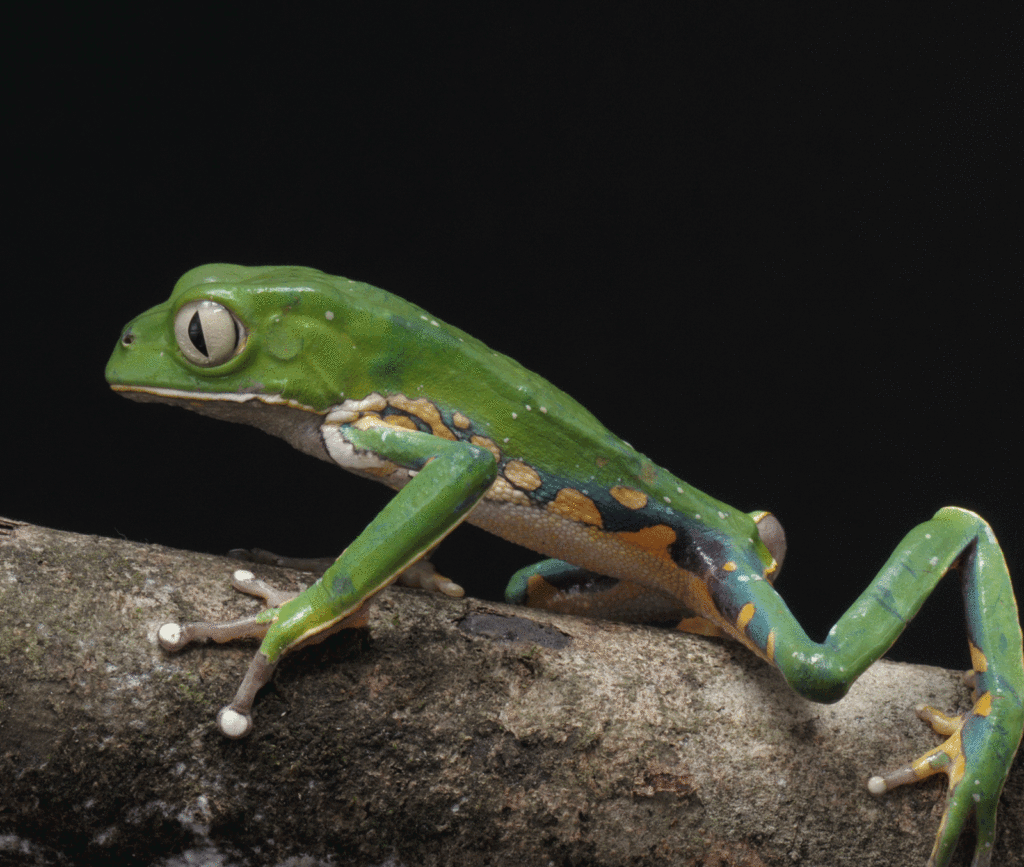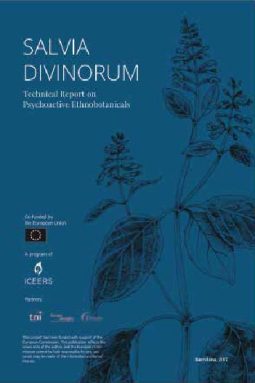Basic info
Kambô is the common name in South America to refer the skin secretions from Phyllomedusa bicolor, a tree frog that inhabits certain areas of the Amazon rainforest. It is also commonly known as sapo (the Spanish word for toad). It has been traditionally used as a medicine by indigenous tribes, such as the Katukina, Yawanahua, Cashinahua, and Matses.
It has been traditionally used to provoke a deep cleansing of the body and the soul, to cure from panama (which could be translated as “bad luck in hunting”), to give strength, and to cure other diseases.
Kambô contains a high number of different bioactive peptides responsible for the physiological effects. The most characteristic being the stimulation of gastrointestinal motility, contributing to vomiting and diarrhea. It also causes a fall in blood pressure and tachycardia. Kambô presents no hallucinatory or psychoactive effects whatsoever. After application, acute effects appear within few minutes and may last for a range of five to twenty minutes depending on the applied dosage.
It is applied in a previously inflicted small and superficial wound created with a burned stick, traditionally known as titica vine (Heteropsis flexuosa). Then, the secretion previously hydrated is placed over the wound appearing like a “dot” the size of a green pea. It is generally applied on the arms or chest in men, or legs in women. The dosage and effect will depend on the number of dots applied.
Origin/History
Traditional use of kambô is geographically centered in the Amazon rainforest, were the frog is found. This practice has been historically rooted in different tribes in regions of the Peruvian, Colombian and Brazilian amazon. Each tribe has its own story or myth about how they started the practice of kambô, usually implying revelations in dreams or in altered states induced by plants.
To begin, the frog is captured and carefully tied up in an X shape. The frog will expel a skin secretion as a defense mechanism from predators. This secretion, stimulated by the stress of manipulating the animal, is collected in a bamboo stick and left to dry for storage. For traditional cultures, this is a medicine that operates on the physiology of the organism or the body, and also in the realm that is beyond material, i.e. the soul. Kambô is regarded as an entity or a spirit that is going to be the responsible for the healing process. In this scenario, the frog is treated with respect and never harmed for, according to Amazonian beliefs, harming it would anger the animal spirit and thus fail to heal. After the extraction, the frog is released back into the forest.
The missionary French priest Constantin Tastevin was the first, in 1925, to come along and register this practice in the upper Juruá river in Brazil. In the 1990’s kambô practices were learned by rubber tappers and they started to apply it in themselves and bring it to towns and cities in Brazil.
The knowledge of this practice has been gradually expanding in the western world. Nowadays is common to find offers of kambô application in plant medicine retreats and find practitioners or even the substance itself advertised online.
Chemical composition and dosage
The Phyllomedusa bicolor skin secretion contains a very high number of bioactive peptides (short chains of aminoacids that can bind to cell receptors in human cells and trigger a reaction in the body) responsible for the physiological effects. Some studies have undertaken several methods of extraction to determine the chemical makeup of kambô and to test the effects of each peptide that is present in large amounts.1
Phyllocaerulein is present in the highest concentration and seems to be responsible for kambô’s principal effects. It has a strong effect on the gastrointestinal smooth muscle, stimulating its motility, bile flow, pancreatic and gastric secretions, and mediates analgesic effects in the central nervous system.
Phillokinin has hypotensive effects on the cardiovascular system.
Phyllomedusin has also strong hypotensive effects, stimulates gut motility (contributing to purging), lacrimal, and salivary secretions.
Sauvagine causes a fall in blood pressure due to a vasodilatation of mesenteric vascular area and provokes intense tachycardia. In the central nervous system, it seems to activate the pituitary-adrenal axis, increasing levels of corticosterone, catecholamines (such as adrenaline) and glucose in plasma.
Opioid peptides. Ala-deltorphin and lys7-dermorphin have strong affinity for opioid receptors, surpassing that of morphine. This is one of the reasons the effect of the venom has been generally attributed to these substances. However, the amounts present in kambô are so limited that they seem to have no significant biological activity in humans.
Peptides from the dermaseptin family have been detected in reduced amounts. These are described to inhibit the growth of a broad spectrum of microorganisms (protozoa, fungi, bacteria and viruses) without harming differentiated mammalian cells, thus being responsible for a potential antibiotic activity.2
As previously mentioned, dosage is measured by the number of dots applied, each dot contains approximately 10 mg of skin secretion with a rough measure of 5 mm in diameter (size of a green pea). Dose of choice will depend on body size, experience, and reasons for application, or on the practitioner’s tradition.
- Low dose: 1 to 3 dots
- Average dose: 3 to 10 dots
- High dose: More than 10 dots
Matses indigenous people from southwestern Amazon have traditionally used kambô application as additional support for hunting practices. They self-apply up to 20 to 30 mg of kambô twice daily.
Some traditional practitioners may reach 100 dots in a single application, yet this dose is limited to cultural rituals and experienced users. It would be dangerous for an unexperienced user to apply a very high dose.
Effects
The principal effects of kambô use seem to correspond to the peptides present in larger amounts, affecting the vascular system, glandular secretions, gastrointestinal activity and regulation of the pituitary-adrenal axis in the central nervous system.
Many other peptides are present in lesser quantities, though their roles in producing effects are uncertain. In humans, it is unlikely that their presence has significant effects due to their very reduced amounts. However, this possibility cannot be excluded. One possibility is that some of these peptides may act together to cause a slight increase of vasodilatation and permeability in the blood-brain barrier, facilitating the compounds access into the circulator system and the central nervous system, but this is still unclear.
By applying it in a fresh wound, kambô can be absorbed subcutaneously and enter the circulatory system. Within few minutes, a rather unpleasant acute physiological response manifests, generally characterized by an increase of the heart rate (that can reach the 190 bpm), a dramatic rise or fall in blood pressure, sweating, dizziness, and may include nausea and vomiting and/or defecation. The acute effect is described to last for several minutes before usually fading away within 5 to 20 min. Other more variable effects in the acute phase may include a feel of strong pressure in the head, neck and chest, stomach pain, inflammation of the throat, blurred vision, dry mouth, a sense of bodily heaviness (difficulty moving), and also a numb and swollen tongue, lips, and face (some users report in the acute symptoms to actually feel like a toad).
When acute effects are fading away, a strong sense of fatigue and sleepiness may appear, in which case it may be necessary to rest.
A large amount of liquid is consumed before kambô application takes place, usually two litters of water, to help with the purging process.
Positive effects of kambô use are described by users several hours (24 h) after the acute effects subside. Users report being left with a sensation of strength, increased sensorial awareness, and mental clarity, as well as strengthening of the immune system
Legal status
Currently there is no legislation regulating the use of kambô.
The only legal measure over the use of kambô to this date is a 2004 ban from the Brazilian government of its commercialization and advertising.
The increasing popularity of kambô has started a debate on who is the rightful owner of the knowledge surrounding its use. Its origins are generally linked to the indigenous people of South West Amazon and one of the main concerns and topics for debate concerning kambô is that of ‘biopiracy’ – the notion that resources located in a territory or practices originating among indigenous people are being stolen. The increasing availability and interest in kambô as an alternative medicine practice is attracting the attention of those who want to explore its therapeutic potential, as well as by those interested in profiting from it, as it can be regarded in some cultures as an “emerging market.” This was the main reason for the legal measure taken following complaints from traditional kambô using tribes.
Health and risk reduction
Kambô affects mainly the circulatory system, in which case its application wouldn’t be recommended specially for persons with a clinical history of blood pressure or heart disease.
Some reports have been published on kambô’s toxicity, i.e. a hepatitis case related to the use of the frog’s venom. There is a forensic report of a sudden death which happened 30 minutes after applying kambô. In this report, they indicate that this person was habitually using kambô and that an acute reaction accumulated over a continued use might have been the cause of death.
Accident reports related to kambô use are caused mainly by lack of information. Some cases of hyponatremia have been reported due to an excessive amount of water intake. Six to ten liters of water consumed in a short period of time can greatly lower the concentration of electrolytes in blood stream, which can pose a threat for the physiological stability of the organism and it’s live. In these cases, users were overwhelmed by the experience induced by the kambô application and tried to deal with it by drinking excessive amounts of water.
There is currently no clinical research concerning kambô, there is very little published information on the topic is registered, and its popularity is rather recent. Thus, the actual benefits are yet to be established. Medical doctors who are aware of it maintain a cautious attitude. It is difficult to predict how a person with neurologic or heart problems or other conditions could be affected by the application.
Prevalence of use
There is little information on the prevalence of use of kambô in western countries. Although its use had always been associated with neo-shamanic practices in communities that use ayahuasca, it had never been very widespread nor well-known. This situation has changed over the last five years, and especially during 2017-2018. Now, kambô is more well-known and popular, and there are many neo-shamanic retreats in which kambô is used along other ethnobotanicals such as ayahuasca, rapé and Incilius alvarius (also known as Bufo alvarius). Numbers are still uncertain as there is no data or research about the prevalence of use, but the general impression is that kambô is becoming an increasingly used substance.
Categories:
PSYCHEPLANTS
, Others
, Kambô
Tags:
health
, Amazon
, kambô
, traditional medicine
, information
, Amazon rainforest


